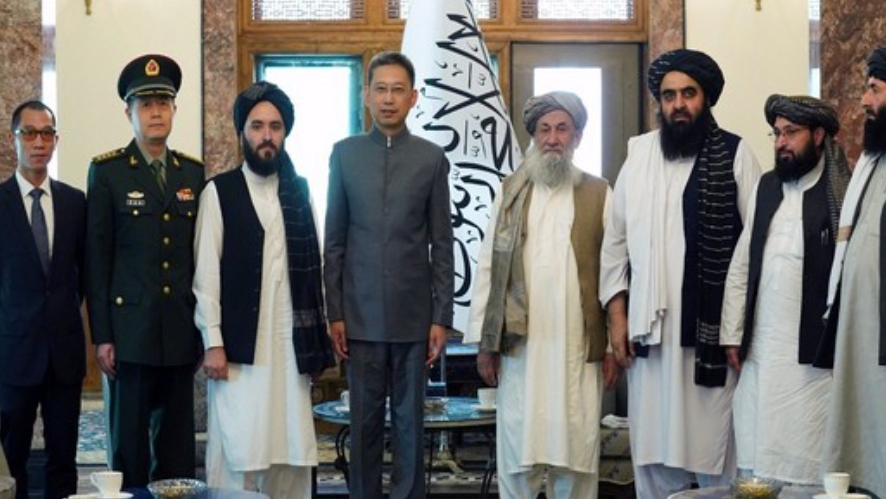Israel-Hamas war: What happens to IMEC now?
- SIS Blog

- Oct 14, 2023
- 3 min read

By Prof. (Dr.) Gulshan Sachdeva
The IMEC holds promise but it must contend with West Asian politics, and demonstrate a clear cost and time advantage over the Suez Canal and the INSTC routes
The Hamas-Israel war and shifting geopolitical dynamics in West Asia could potentially cast a significant shadow over the much-discussed India-Middle-East-Europe Economic Corridor (IMEC). The IMEC was announced on the sidelines of the G20 Summit just a month ago. United States President Joe Biden called it a “real big deal”. The European Commission President labelled it as the “most ambitious project of our generation”.
Given India's robust economic ties with both Europe and West Asia, the proposition looked attractive. Prime Minister Narendra Modi asserted that the IMEC “is going to become the basis of world trade for hundreds of years to come, and history will always remember that this corridor was initiated on Indian soil".
The proposed multi-modal corridor will link India to Europe through the United Arab Emirates, Saudi Arabia, Jordan, Israel and Greece. While the economics of the IMEC route compared to the tested Suez Canal route is still not clear, it made a lot of geopolitical sense to most observers.
Currently, the IMEC seems to be off-track even before the intricate land, sea and railroad corridor details have been fully developed. The Israel-Palestine conflict is going to impact the broader process of normalisation between Israel and many Arab states. While the US-led IMEC initiative is based on the new dynamics in the region, the Hamas-Israel war has rekindled the relevance of traditional regional politics.
The inclusion of 'Middle East' in naming the corridor suggested that this was more in line with a US design rather than a connectivity strategy originating from New Delhi. So far, the US has not committed any funding for the project. The idea has been to mobilise funding from the partners, private sector and multilateral organisations. External Affairs Minister S Jaishankar called the US a “guarantor partner of the project” . The US was trying to build upon the successes of the Abraham Accords of 2020, India-Israel-UAE-US (I2U2) grouping and reconciliation efforts between Saudi Arabia and Israel.

Although many analysts clubbed the IMEC with the Delhi G20 Summit outcomes, it is actually an outcome of the G7 initiative called Partnership for Global Infrastructure and Investment (PGII), announced in the United Kingdom in 2021 and launched in Germany in 2022. The PGII is also being aligned with the EU’s Global Gateway Strategy as well as other Western initiatives viz Build Back Better World (B3W) and Blue Dot Network.
Without waiting for the IMEC details, many enthusiastic analysts have declared it as a counter to China’s Belt and Road Initiative (BRI). Both these initiatives have different logics and timelines. The BRI is now 10 years old. Close to 100 countries will be participating in the third BRI Forum in China later this month. Chinese officials claim that they have already established 3,000 projects and galvanised $1 trillion investments.
Moreover, many of the IMEC partners are not looking at it as an alternative to the BRI. Some of them are already participating in the BRI. China has also established strategic partnerships with Greece (2006), Jordan (2015), the UAE (2018) and Saudi Arabia (2022). Riyadh and Abu Dhabi are also now members of the BRICS.
The IMEC is the second US led connectivity project in which India is participating. Incidentally, the New Silk Road (NSR) strategy project was also announced on Indian soil by the then US Secretary of State Hillary Clinton in 2011. The idea was to develop trade and energy corridors linking South and Central Asian economies via Afghanistan. While US never put any serious money behind the NSR, India wholeheartedly embraced the narrative until the US’ withdrawal from Afghanistan. Now China and the Taliban have agreed to link Afghanistan with the BRI.
Despite the current phase of globalisation being significantly shaped by connectivity designs, India has yet to unveil a comprehensive connectivity strategy.
Over the years, the International North-South Trade Corridor (INSTC) initiated by India, Iran and Russia was considered a key component of India's connectivity strategy. Additionally, joint initiatives like the India-Japan Asia-Africa Growth Corridor and the India-EU connectivity partnership were announced. However, to date, none of these projects have really taken off. The IMEC holds promise, primarily owing to existing trade volumes, but it must contend with West Asian politics, and demonstrate a clear cost and time advantage over the Suez Canal and the INSTC routes.
Originally Published : Deccan Herald, 11th October' 2023
Posted in SIS Blog with the Authorisation of the Author
Prof. (Dr.) Gulshan Sachdeva is Professor at the Centre for European Studies and Coordinator, Jean Monnet Centre of Excellence, Jawaharlal Nehru University, New Delhi, India







